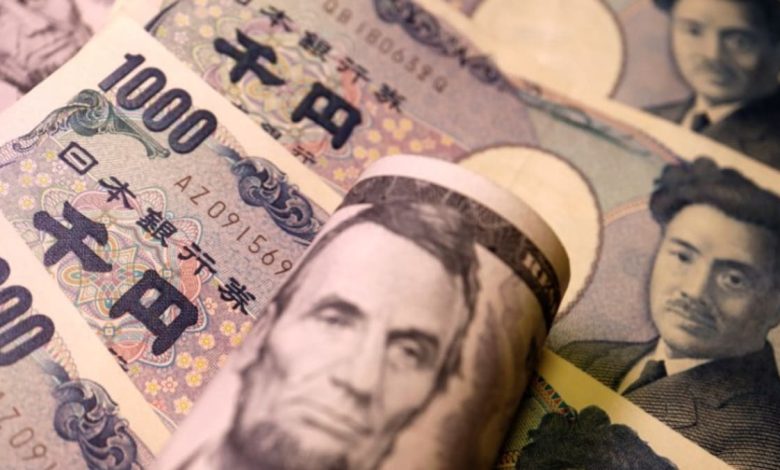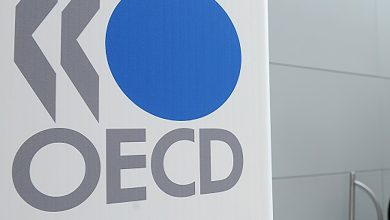Dollar near one-week high on jobs relief; yen sags

TOKYO : The dollar hovered close to a one-week high against major rivals on Friday, after the biggest drop in U.S. jobless claims in close to a year allayed fears of a looming economic downturn.
The U.S. currency extended gains against the Japanese yen to a fourth day, buoyed by a spike in Treasury yields following Thursday’s firmer-than-expected employment data, which spurred a paring back in bets for Federal Reserve interest rate cuts this year.
The yen and fellow safe-haven currency the Swiss franc languished near one-week lows after Wall Street rallied on the improved macroeconomic outlook, while riskier currencies such as the Australian dollar and sterling remained elevated following strong gains overnight.
Markets have endured a turbulent week, triggered in large part by surprisingly soft U.S. payrolls figures a week ago that sent global stocks tumbling on Monday, while demand for the safety of assets such as the yen and the Swissie sent the currencies surging to their highest levels since the start of the year on Monday.
The dollar was up 0.27 per cent at 147.66 yen as of 1153 GMT, on course for an advance of around 0.8 per cent this week, despite Monday’s precipitous 1.5 per cent plunge.
It was flat at 0.8670 franc, keeping it on track for a 1 per cent weekly advance.
Initial claims for state unemployment benefits fell 17,000 to a seasonally adjusted 233,000 for the week ended Aug. 3, the largest drop in about 11 months. Economists polled by Reuters had forecast 240,000 claims for the latest week.
The odds of the Federal Reserve cutting interest rates by 50 basis points at its next policy meeting on Sept. 17-18 fell to 54 per cent, from 69 per cent on Wednesday, with a 25 basis point cut now seen as having a 46 per cent probability, according to the CME Group’s FedWatch Tool.
“Despite the volatility in claims data, especially around this time of year, the data helped allay fears of a more rapid deterioration in the labour market,” said Taylor Nugent, senior markets economist at National Australia Bank.
The outsized Wall Street rally, which spurred the flight from the yen and Swiss franc, was “an unusual reaction to a such a volatile weekly print … underscoring the market’s sensitivity to labour market indicators after Friday’s soft payrolls,” he said.
The yen had shot higher this month, reaching the strongest since Jan. 2 at 141.675 per dollar on Monday, as an unwinding of short positions snowballed following a surprise rate hike by the Bank of Japan and weakness in U.S. economic indicators.
Commodity Futures Trading Commission figures later on Friday will give a clearer indication of whether that unwinding has now run its course.
The dollar index, which measures the currency versus the yen, Swissie, euro, sterling and two other peers, was flat at 103.30 following three days of gains. It rose as high as 103.54 at one point overnight for the first time since Aug. 2, but was last trading little changed from a week ago.
The euro was little changed at $1.0915, up 0.08 per cent from a week ago. On Monday, the shared currency soared as high as $1.1009 for the first time since Jan. 2.
Sterling was steady at $1.2744, after a 0.49 per cent rally overnight that yanked it back from a more than one-month low. However, it remained on course for a 0.42 per cent slide this week, which would be a fourth straight week of declines.
The Aussie eased slightly to $0.6584 after earlier touching $0.65925 for the first time since July 24, given additional support from the Reserve Bank of Australia’s hawkish comments a day earlier. It is up 1.24 per cent this week.
Leading cryptocurrency bitcoin reached a one-week high of $62,717, and last traded about 3.3 per cent higher at $61,500. For the week, it was up about 4 per cent.





